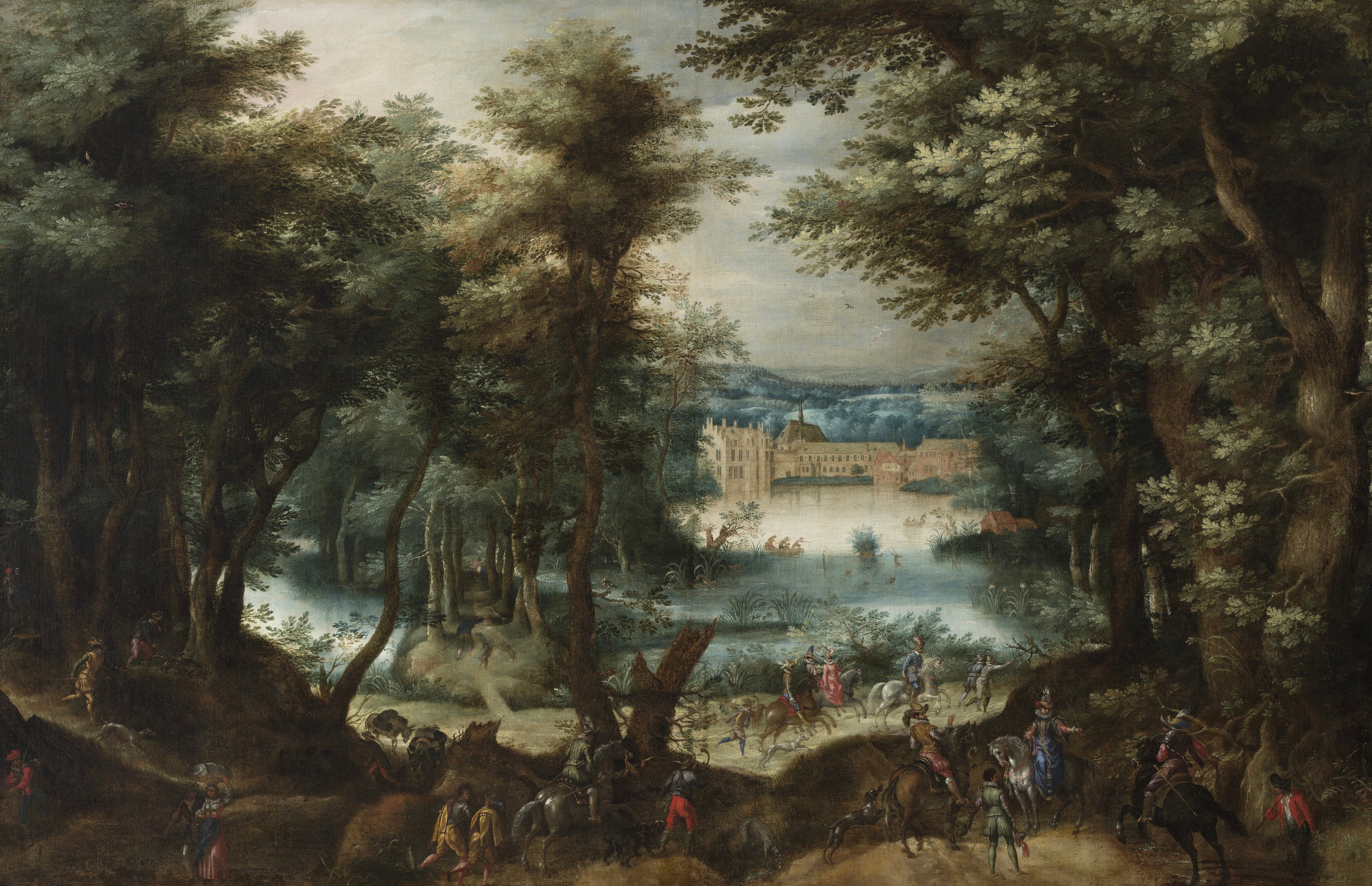
Around 1600, the forest landscape emerged as a genre in its own right in Flemish painting. It combined awe of dark, inaccessible forests with their importance as hunting grounds and retreats. Denis van Alsloot depicted the Forêt de Soignes near Brussels in his work.
Flemish forest landscape around 1600
The genre of the so-called forest landscape emerged in Flemish painting around 1600, with real observations being incorporated into fanciful compositions. From the perspective of the early modern period, dense forests were truly fearful places that had eluded the taming forces of civilisation. Like the mountain landscapes which developed in Flanders at the same time and were painted in large numbers, the rough, menacingly dark forests made people seem small and helpless. Even so, the same times also ascribed a positive meaning to forest scenes: as sovereign hunting grounds which consequently were subject to the local prince’s power of disposition. Also positive were their use as a spiritual retreat, as a site of religious contemplation. The painting unites both points of view and refers to actual circumstances. Depicted here is the large woodland area to the south of Brussels, the Forêt de Soignes, which was the ancestral hunting ground of the local ruler. The large area contained several monasteries, such as the Augustinian priory of Groenendael which is shown in the background but which has disappeared today.
Denis van Alsloot came from Mechelen and worked for the Brussels court of the Spanish governors, the couple Archduke Albrecht VII of Austria (1559–1621) and Isabella Clara Eugenia (1566–1633). In numerous large-format landscapes, he captured real places in the densely wooded surroundings of the residential town in the course of the seasons. Colleagues who were also employed by the court often provided the accompanying figures, a collaboration of specialists typical of Flemish painting as a whole.
This painting, too, may have been part of a cycle of the four seasons. The painter, who also worked for the famous Brussels carpet weaving manufactory, would have certainly been aware of those older tapestries, woven according to designs by Bernaert van Orley (ca. 1491/92–1542), which depicted scenes of Maximilian I’s court hunts against the backdrop of the Forêt de Soignes.
Text: Ulrich Becker